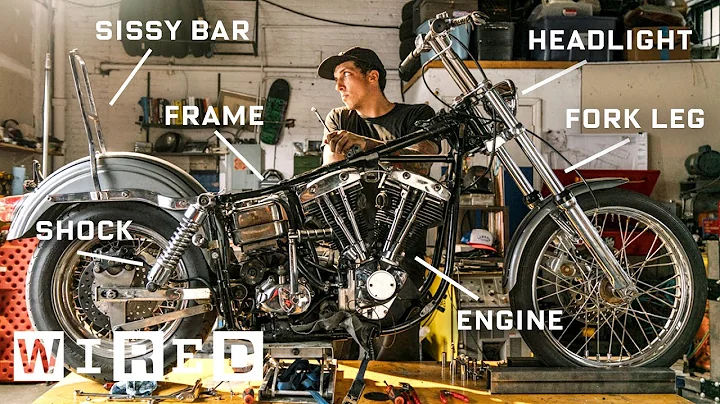Mastering Scroll Saw Blades: The Ultimate Guide
Table of Contents
- Introduction
- Pin vs. Pinless Blades
- Blade Sizing
- Types of Blades
- Regular Blades
- Skip Tooth Blades
- Double Skip Blades
- Reverse Tooth Blades
- Crown Tooth Blades
- Spiral Blades
- Modified Geometry Blades
- Bonus Tips
- When to Replace Your Blade
- Conclusion
Choosing the Right Scroll Saw Blade: A Comprehensive Guide 🔄
Introduction:
Scroll saw blades come in a variety of types, sizes, and configurations, making it challenging to choose the right one for your specific needs. While there are some rules of thumb when it comes to selecting scroll saw blades, personal preference plays a significant role in determining the ideal blade for each individual. In this article, we will provide you with a comprehensive guide to help you navigate through the different types of scroll saw blades, their sizes, and their functionalities. By the end, you will have the confidence to experiment and find the blades that work best for you and the materials you typically work with.
Pin vs. Pinless Blades
When it comes to the attachment of blades to your scroll saw, you have the option of choosing pin blades or pinless blades. Pin blades have small cross pins attached to both ends, whereas pinless blades do not require any pins. While some older scroll saws only accept pinned blades, most modern saws accommodate both types. However, pin blades have their limitations. They are too large to fit through small pilot holes, making intricate cuts difficult. Additionally, the versatility of pinless blades makes them a preferred choice for most scroll saw artists. Therefore, unless you have a specific requirement for pin blades, it is advisable to opt for pinless blades for better flexibility and convenience.
Blade Sizing
Understanding the sizing system for scroll saw blades is crucial in choosing the right blade for your projects. Scroll saw blades are labeled with numbers ranging from 0 to 12, with 0 being the thinnest and smallest blade, while 12 represents the thickest and largest blade. Thinner blades are suitable for cutting thinner or less dense woods, while thicker blades are better suited for larger and denser woods such as hardwoods. It is essential to consider both the thickness and density of the wood you are working with to select the appropriate blade. A quarter-inch of hardwood may require the same blade as cutting a half-inch of softer wood. Keep in mind that thinner blades provide better precision and leave fewer traces on the wood, while thicker blades offer more cutting stability. To get started, a number five blade is a good medium point, but it's always necessary to adjust the blade size based on the specific requirements of your project.
Types of Blades
Now let's explore the different types of scroll saw blades available in the market. Knowing the characteristics and applications of each type will help you make an informed decision.
Regular Blades
Regular blades are the traditional type of scroll saw blades, featuring evenly spaced teeth along the entire length of the blade, all cutting in the same direction. While they were commonly used in the past, manufacturers have introduced more specialized blades that perform better in wood cutting. Regular blades can be aggressive, resulting in a messy cut surface and a higher chance of wood burning. Hence, they are not commonly favored by scroll saw artists.
Skip Tooth Blades
Skip tooth blades are similar to regular blades, but they have alternate teeth missing, creating spaces between the teeth. These spaces help clear the sawdust and allow the blade to cut faster. However, the absence of some teeth can result in a rougher cut surface compared to regular blades. Skip tooth blades have their value in certain applications, but they may not be the go-to choice for everyday use.
Double Skip Blades
Double skip blades combine the features of regular blades and skip tooth blades. They have spaces between the teeth like skip tooth blades but provide a smoother cut surface, akin to regular blades. They strike a balance between fast cutting and a relatively smooth finish. While they may not be as commonly used as other blade types, they offer versatility for specific cutting requirements.
Reverse Tooth Blades
Reverse tooth blades have a similar configuration to skip tooth or regular blades, with a majority of the teeth facing downward. However, a couple of teeth at the bottom of the blade face upward. The purpose of the upward-facing teeth is to cut away splinters from the bottom of the workpiece. While a regular reverse tooth blade might not clear sawdust as effectively and may wear out faster, the benefits of smoother finishing and easier sanding make them a popular choice among scroll saw artists.
Crown Tooth Blades
Crown tooth blades have teeth with a unique crown shape that cuts both up and down, resulting in a smooth finished cut. While they do deliver a smooth surface, the cutting process is slower compared to other blade types. Crown tooth blades are not commonly used by scroll saw artists, but they can be an option if you require an exceptionally refined finish.
Spiral Blades
Spiral blades have teeth that move in a spiral motion, enabling cutting in any direction. This feature allows for greater maneuverability, especially when working with large or intricate pieces that may not have sufficient clearance for blade rotation. Spiral blades are useful for moving the workpiece back and forth or sideways. However, they can be challenging to control, especially for beginners, and are not recommended for everyday use.
Modified Geometry Blades
Modified geometry blades are a relatively new addition to the scroll saw blade market. They are engineered to incorporate the best features of various blade types. Modified geometry blades have ample space for sawdust clearance, preventing burning while also featuring reverse teeth for splinter-free cuts and a smooth finish. Many experienced scroll saw artists have started exclusively using modified geometry blades due to their superior performance across different types of projects. These blades reduce the need for frequent blade changes, making them a convenient and versatile choice.
Bonus Tips
Here are some additional tips to enhance your scroll sawing experience:
- Remove the oil coating: If you experience blade slipping, it may be due to the oil coating applied at the factory. Lightly sanding the blade with sandpaper can help remove the oil, improving its grip.
- Ensure tooth direction: Regardless of the blade type, always ensure that the direction of the teeth is pointed downward. Even with reverse tooth blades, the majority of the teeth should face downward to ensure optimal cutting performance.
- Recognize when to replace your blade: When a blade starts to become dull, you may notice that you need to exert more pressure to make cuts or see a thicker pile of sawdust around the top of the blade. Replacing a dull blade is essential to maintain accuracy and prevent breakage.
- Blade lifespan for cutting thick hardwood: When cutting thick hardwood, it is crucial to replace blades more frequently, as they tend to wear out faster due to the denseness and hardness of the wood.
Conclusion:
Choosing the right scroll saw blade boils down to personal preference and the specific requirements of your project. By understanding the types, sizes, and functionalities of different blades, you can confidently select the most suitable blade for your work. Remember to experiment with various blade types and sizes to find what works best for you. Enjoy the process of scrolling and have fun exploring the endless possibilities offered by scroll sawing!
FAQ
Q: Should I use pin blades or pinless blades?
A: Pinless blades offer greater versatility and flexibility compared to pin blades. However, if your scroll saw only accepts pinned blades, you may have limited options.
Q: Which blade size should I choose for intricate cuts?
A: Thinner blades, such as size zero or one, are ideal for intricate cuts that require precision and minimal wood removal.
Q: What is the benefit of using reverse tooth blades?
A: Reverse tooth blades cut splinters from the bottom of the workpiece, resulting in a smoother finish and easier sanding.
Q: Are spiral blades suitable for beginners?
A: Spiral blades can be challenging to control, especially for beginners. It is recommended to gain some experience with other blade types before attempting to use spiral blades.
Q: Can I use modified geometry blades for all types of projects?
A: Yes, modified geometry blades are engineered to deliver excellent performance across different types of projects. Many scroll saw artists exclusively use these blades for their versatility.







